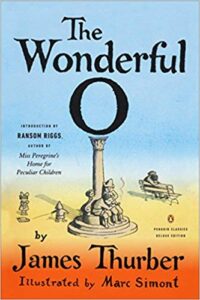 A lipogram is a word game that consists of writing new material or rewriting existing material by leaving out certain letters of the alphabet. (Lipogram comes from a Greek word meaning “missing letter.”) One of the most famous practitioners was A. Ross Eckler, who among other challenges he gave himself, rewrote the nursery rhyme “Mary Had a Little Lamb/ It fleece was white as snow” in multiple versions. The most common letter in English is “E,” so omitting that letter is challenging. Here is Mr. Eckler’s attempt:
A lipogram is a word game that consists of writing new material or rewriting existing material by leaving out certain letters of the alphabet. (Lipogram comes from a Greek word meaning “missing letter.”) One of the most famous practitioners was A. Ross Eckler, who among other challenges he gave himself, rewrote the nursery rhyme “Mary Had a Little Lamb/ It fleece was white as snow” in multiple versions. The most common letter in English is “E,” so omitting that letter is challenging. Here is Mr. Eckler’s attempt:
Mary had a tiny lamb
Its wool was pallid as snow,
And any spot that Mary did walk
This lamb would always go.
This lamb did follow Mary to school
Although against a law.
How girls and boys did laugh and play
That lamb in class all saw.
The poetry suffers, but people who like lipograms are often more interested in meeting the challenge than achieving the perfect result, making lipograms a logical left challenge.
On the other hand, some authors are charmingly creative. Ella Minnow Pea (LMNOP, get it?) by Mark Dunn came out in 2001. The story is set on the fictitious island of Nollop off the coast of South Carolina which was once home to Nevin Nollop, the supposed creator of the well-known pangram “The quick brown fox jumps over the lazy dog.” (A pangram is a sentence that uses all of the letters of the alphabet concisely – in this case, 35 letters.)
The sentence is preserved on a memorial, and is taken very seriously by the island government. Throughout the book, tiles containing the letters fall from the inscription beneath the statue, and as each one does, the island’s government – seeing it as a message from the deceased Nevin Nollop – bans that letter’s use from written or spoken communication. Consider the difficulty of doing this, and you will understand that the punishment of banishment for the third offense soon resulted in a vastly diminished population on the island.
The plot is conveyed through notes sent between various characters, and as the book progresses, and more and more letters are banned, they are forced to rely on creative spelling. The fact that the author pulls it off is half the fun of the book.
The first letters to fall off the memorial are J, Q and Z, which is not so bad, but soon many more are gone. Here is part of a note from Ella’s friend Tom that comes fairly near the end of the novel, when he is hiding out from the council, and shows the effect of four more missing letters. (Hint: It is easier to understand if you try reading it out loud):
I am alyph ant well. Please tont worry apowt me. I haph mate this one phirtiph midnight phoray to leaph this note.
Can you tell which additional four letters are missing? By the end only (fittingly) LMNOP remain. The only way to change the rigid government council members’ minds is to disprove Mr. Nollop’s omniscience by finding a pangram of 32 letters (in contrast to Nollop’s 35). I can tell you that all ends well.
 Another book in which a lipogram is a key element is James Thurber’s The Wonderful O. It centers on a man who hated the letter “O” because his mother was once wedged in a ship’s porthole and when her would-be rescuers couldn’t pull her in, they pushed her out. It’s a story about pirates and the takeover of an island where “O” is banned, which meant:
Another book in which a lipogram is a key element is James Thurber’s The Wonderful O. It centers on a man who hated the letter “O” because his mother was once wedged in a ship’s porthole and when her would-be rescuers couldn’t pull her in, they pushed her out. It’s a story about pirates and the takeover of an island where “O” is banned, which meant:
- Cnfusin reigned and chas
- A man named Otto Ott, when asked his name could only stutter
- Ophelia Oliver was ashamed (Take out the O’s to see why)
Eventually the islanders decided that there were four words with an “O” that must not be lost. Three were:
- Hope
- Love
- Valor
The fourth is the most important one and the whole point of the book.
What do you think it might be? (Hint: What was taken away from them?)
To order The Wonderful O, click here.
To order Ella Minnow Pea by Mark Dunn, click here.
